Leverage Space Technology for Wildlife Protection with the European Space Agency Kick-start Grant
5 July 2017 12:00am
[ARCHIVE] OpenAerialMap
19 June 2017 10:54am
Deploying poaching monitoring with Sapelli app
28 June 2017 2:38pm
Trialing Audiomoth to detect the hidden threats under the canopies of Belize
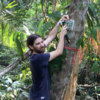 Andrew Hill
and 1 more
Andrew Hill
and 1 more
27 June 2017 12:00am
International Society for Photogrammetry and Remote Sensing - Student Consortium Newsletter
24 June 2017 2:19am
Article: Google's cloud vision for automated identification of camera trap photos
12 April 2016 1:04pm
7 August 2016 11:25pm
An update to the automated species identification debate:
A paper has recently come out which used deep learning ("very deep convolutional networks") and managed 89% accuracy for the Snapshot Serengeti Zooniverse dataset, IF the image was first manually cropped around the animal. Seriously, who has time to do that? If the image remained uncropped they managed a woeful 35% accuracy.
Perhaps we have a long wait ahead of us for this to become a practical reality?
22 June 2017 7:22am
Note that paper isn't actually a journal article, hasn't gone through peer review, its a preprint.
24 June 2017 12:50am
Fair point, it isn't a peer reviewed article as yet. I had a poke around out of curiosity and wasn't able to track down a fully published paper yet (thought it's been a while since this preprint was released...). On reading, were there any issues that stood out to you that others should be aware of? And, as Ollie pointed out, the research wasn't getting a great response rate from uncropped images - I wonder if perhaps, given the time since the original publication, the results may have actually improved by now? It seems (from my interested but unqualified observer perspective) that the field is moving forward in leaps and bounds, such that a paper pre-published in march 2016 may very well be out of date by this stage...
Best Practice for Using Drones for Conservation: Let's create a living guidelines document
3 February 2017 10:13am
3 April 2017 8:45am
There's also GitLab. Again, it's probably not perfect as it's designed for coding, but I'm currently using it with a conference organising committee.
3 April 2017 9:44am
I personally think a wiki would be best.
23 June 2017 5:23pm
People in this thread might be interested in this special issue of remote sensing in ecology and conservation, looking for papers on "New Approaches to Citizen Science". Submissions close 15th July
http://zslpublications.onlinelibrary.wiley.com/hub/journal/10.1002/(ISSN)2056-3485/journal-menu/call-for-papers.html
Wildlife Crime Tech Challenge: YIARI is helping protect slow lorises
23 June 2017 12:00am
Open source mobile mapping with Leaflet
21 June 2017 4:59pm
Naturewatch: Lessons from the field of app development
21 June 2017 12:00am
Ideas for tackling illegal logging with technology?
9 November 2015 3:56pm
7 March 2016 11:32am
Many thanks, Chris. Whilst my understanding of blockchain technology is quite superficial, I can see it may have multiple additional applications for conservation, as you suggest.
22 May 2017 3:51pm
A new article by Lyndsie Bourgon in the Smithsonian magazine highlights recent innovations that may be of interest to members of this discussion. The article is a fascinating read in its entirety, uncovering the loss of ancient trees from protected areas around the world.
How Thousand-Year-Old Trees Became the New Ivory
Ancient trees are disappearing from protected national forests around the world. A look inside $100 billion market for stolen wood
It was a local hiker who noticed, during a backwoods stroll in May 2012, the remains of the body. The victim in question: an 800-year-old cedar tree. Fifty meters tall and with a trunk three meters in circumference, the cedar was one of the crown jewels in Canada’s Carmanah Walbran Provincial Park. Now all that remained was a minivan-sized section of its trunk, surrounded by shards of wood and dust, with broken heavy equipment chains lying nearby... Lately, these living ecosystems have been disappearing across the province. In the past decade, forest investigators have found themselves fielding cases in which more than 100 trees were stolen at once.
...
Global timber theft has grown into a “rapidly escalating environmental crime wave” according to a 2012 report by the United Nations Environmental Program (UNEP) and Interpol, titled Green Carbon, Black Trade. The report estimates estimate that somewhere between 15 to 30 per cent of the global timber trade is conducted through the black market and linked to organized crime outfits that wouldn’t balk at trading weapons or humans. Now with armed “timber cartels” as part of their operation, these groups have identified profit in the immense value of ancient nature.
...
Two main factors have made timber so appealing in recent years. First, the pay-off: One massive old growth cedar can fetch close to $20,000. A report released in 2000 from the Canadian Forest Service’s Pacific Forestry Centre noted theft of Canada’s timber as a growing problem, costing B.C. $20 million annually. Red cedar is especially at risk, with thieves often specifically targeting its ‘high grade’ old growth. Even smaller parts of trees can be incredibly valuable: In 2014 there were 18 cases of thieves hacking out chunks of burl from 1000-year-old California redwoods.
Second, stealing trees is low-risk. In a globalized economy, timber is exceptionally easy for thieves to get their hands on, says Cameron Kamiya, Canada’s only full-time forest crime investigator. And the Carmanah is the perfect place to commit a crime: a remote rainforest sanctuary on the Canadian west coast, thick with damp air and spearmint canopies of moss. It is so vast and so sparingly visited that park wardens only patrol the area about four times a year.
...
CITES, a convention that many countries follow, regulates the trade of plants and animals, including about 600 timber species. About 400 of these species—including rosewood, bigleaf mahogany and Asian yews—are actively, commercially exploited. In theory, countries that participate in CITES agree to subject exporters to trade regulations, including requiring that they show a permit for the wood they are trading.
But Chen Hin Keong, head of the Global Forest Trade Programme at the wildlife trade monitoring organization TRAFFIC International, says that permits often aren't requested. “There is a good chance that they won’t ask. No one bothers,” says Keong. “If I’m a retailer selling furniture, I can ask my supplier if it’s legal, but he might buy the materials from 10 different sources and he’ll have to check. He might buy his plywood from one place, his dowels from another, planks from somewhere else.”
...
IV. Fingerprinting the Forest
As global tree researchers get more savvy, they’re figuring out how to fingerprint wood products back to the ancient trees they came from.
Eleanor White, a retired molecular biologist with the Canadian Forest Services, was the first to develop a way to “fingerprint” trees. In the late 1990s, she developed a method that has since played a key role in advancing a database of red and yellow cedar DNA in British Columbia. White’s method uses a mixture of solvents to isolate short, repeated DNA segments “microsatellites” from samples of wood. Like fingerprints, each tree has a unique pattern of these microsatellites.
Tree fingerprints are just one promising innovation in a relatively new field: forest forensics. New scientific developments are being used to raise the stakes of this kind of lucrative, difficult-to-trace theft. The goal is to dissuade both individual poachers—those who take trees for firewood, or harvest a Christmas tree from preserved land—and large-scale timber thieves alike.
In Oregon, U.S. Fish and Wildlife has developed its own forensics lab to investigate cases of poaching and timber theft. Ken Goddard, the lab’s director, has been working in park crime since 1979. He wrote a manual for environmental crime scene investigation and is also a bestselling serial novelist, having written books like Double Blind, which follows a U.S. Fish & Wildlife special agent into the wilderness.
Today he runs the only lab in the world dedicated to crimes against wildlife—“though we sure don’t want to be,” he says. They tackle some of the most bizarre crimes in America: illegally imported caviar, poached bear gall bladder, plants coated in banned pesticides, and of course, tree poaching.
“When we first started looking at it”—tree theft—“we were stunned,” says Goddard. “We were starting to hear stories from agents in other countries, about entire forests being clear-cut and ships filled with raw trees in containerized cargo. At that point we couldn’t make an identification if it was milled into planks, so we had to come up with something.” Right now they spend a lot of time handling the illegal import of agarwood, which most often makes its way to the lab in the form of wood chips or incense sticks. Known for its dark, aromatic resin that provides the musky, earthy smell common in manufactured scents, a kilo of agarwood can sell for up to $100,000.
The lab guides investigators who intercept these shipments on how to get samples. It isn’t exactly glamorous. The work includes digging through shipping containers filled with raw material and extracting single logs or planks to take back to the lab. “It’s pretty horrendous work, the mechanics and science of it,” says Goddard. “You’re supposed to take a random sampling for results, but imagine a container full of 2x4s and you’re supposed to take the 412th 2x4 in the bunch. It’s a tremendous amount of physical work, to get that sample.”
Very little of the work that the lab’s criminologists, Ed Espinoza and Gabriela Chavarria, do is actually based in the forest. Rather, they most often examine evidence that has already been manipulated; that is, the tree has already been turned into a product. The team will receive boxes of wood chips or shipments of milled, kiln-dried planks from Fish & Wildlife agents or border inspectors, and get to work hunting around for specific ions to determine the species of wood.
They use chemistry to nab tree poachers after the act, because by the time the samples get to them, the wood is almost unrecognizable. On rare occasions, they have been asked to study full logs or planks that have been misleadingly labeled or declared. “With all the shows today, they mix up CSI with forensics and it really isn’t,” says Espinoza.
Espinoza has done groundbreaking work when it comes to developing a method to identify tree genuses: “Up until a few months ago, as far as anyone in the world could go was family,” says Goddard. Espinoza’s work has since been applied to a species of trees called aguilaria, in which agarwood falls. “It’s a mind-boggling discovery,” says Goddard.
Espinoza uses mass spectrometry to identify chemical compounds, essentially by turning an unknown liquid (in this case, oils from bark) into a gas and then injecting it into the dart instrument. The chemical compounds then show up on a screen a few seconds later.
In addition to forensics, there have been some attempts by non-governmental organizations to push for a customer-driven solution. The World Wildlife Foundation is working with companies like Kimberly Clarke, Hewlett-Packard and McDonald’s to help identify places in their supply chain where they may be inadvertently part of the world’s illegal timber trade. McDonald’s, for instance, is focusing entirely on the origins of its paper packaging.


20 June 2017 1:48pm
@victoria from Global Trees Campaign just flagged an event for us over on twitter that might be of interest to this thread in particular. Starting in jus ta few hours, the Forest Governance Project at Chatham House will be hosting a livestream debate: 'What challenges and opportunites are pos3ed by satellite technology and how can it help stakeholders across the timber suply chain?'.
Starting in a few hours... join @CH_Logging's livestream on tackling illegal logging with satellite technology. @WILDLABSNET https://t.co/eeqwiVOf38
— GlobalTreesCampaign (@globaltrees) June 20, 2017
WATCH HERE: https://www.chathamhouse.org/livestream


Biomaker Challenge - up to £1000 support for prototyping sensors and instrumentation related to biology
19 June 2017 3:46pm
19 June 2017 3:51pm
Hey Jenny,
Thanks for sharing this, looks really interesting! In addition to WILDLABS members potentially getting involved, it'd be great to hear about some of the projects that get developed through the challenge. It looks like they're all going to be shared openly on github! Perhaps you could highlight or direct folks here to any as they emerge that you think might be particularly relevant?
Steph
19 June 2017 4:03pm
Hi Steph
Sure - we'll have the projects confirmed by 30 June and I can highlight ones that might be of interest!
Jenny
OpenDroneMap
3 April 2017 9:24am
8 April 2017 5:56pm
Hi Thomas,
I tested it with some success, Pix4D offers more quality but ODM is doing the job quite well.
Since the process is quite demanding I will recomend you to execute ODM nativelly without virtual machine.
Maybe you can go directly for webODM:
https://github.com/OpenDroneMap/WebODM
19 June 2017 10:51am
Thanks @Lot ; I did try looking at WebODM but I even found this to be quite a convoluted process to get running. I've just volunteered as a tester for a new Windows one-click install for WebODM, so I'll take a look this week and feed back on this thread.
19 June 2017 11:20am
Cool! Thanks @Tomas Starnes.
Meanwhile, http://precisionmapper.com/ has adopted the freemium model, so the first 60 maps by year are free, It's not open source but its free. I tried and works well, the 2d maps are perfect, the 3D digital model of terrain it's not the best but it's ok.
Apply now for the 2017 Annual Geo for Good User Summit
15 June 2017 7:20pm
16 June 2017 10:14am
Fantastic opportunity - thanks for sharing, @dave !
The Google Earth Engine User Summit 2017 was convened this week also at Google in CA. I know that @andyarnell went and I'm hoping that he will feed back to the group.
Wildlife conservation & networking technologies
5 August 2016 8:54am
23 February 2017 9:05am
@ Jan Kees are you working in th Netherlands by any chance?
23 February 2017 12:26pm
@Theun , that's right. Amsterdam to be exact ;-)
Can I help you with anything?
13 June 2017 2:11pm
Hi Anthony, Isla's list is very comprehensive. The Vulcan Domain Awareness System (DAS) started at LEWA in Kenya where our own JIGZAW web based intelligence database and analysis network has been operational for 6 years. DAS is about current operations, JIGZAW is about sharing information from sources (open or covert) and creating intelligence on modus operandi and the players involved in poaching, supply chain, organised crime and corrupt officials. IT does similar things to I2 or Palantir (not automatic data linking) but its free. DAS and JIGZAW can share data. In Kruger there are examples of serioously joined up data sharing from sensors and Ten Boma in Tsavo is doing similar things with some success I believe. Our approach is more strategic, which is to enable information sharing between NGOs and protected parks and trusted national agencies. The key word is trust. There is a lack of analytical capacity at the tactical level and at present Big Data is not yet the best way to capture what the local people are saying, thinking and concerned about. It is sheer old fashioned HUMINT and that takes training and resources. JIGZAW helps people who know how to do that, to do it securely and more efficiently. JIGZAW is also license free software only to those in the wildlife conservancy business. Brief presentation attached. Good luck
Product Grant Program for Wildlife Acoustics hardware & software
12 June 2017 7:35pm
Download the WILDLABS Annual Report 2016
12 June 2017 12:00am
2017 Write Speak Code Conference for Women in Tech
6 June 2017 8:50pm
Wolf detector prototype
30 April 2016 2:10pm
23 May 2016 1:16pm
Hi Arik
Did you already test it with wolves?? I would be very interested in learning your results as I am preparing some accustic monitoring of wolves for my PhD.
keeping in touch
Nuno
23 May 2016 1:19pm
Hi Nuno,
Still working on the design, and in particular the microphone technology so that we can be confident of detecting animals at long range. Our current system using SM3s works well up to several kilometers.
Where are you planning to detect wolves? Will you be at CSF next month? We could talk more there. But keep an eye on this thread and I'll post updates.
Thanks,
Arik
5 June 2017 6:22pm
Hi guys, interesting discussion. As you may have read, we are developing an elephant-detector (to avoid HWC's). The technology we are using (neural networks) can also be used to learn to recognize wolves automatically. If you have wolf-sound samples for us, we can create a classifier to automatically process your recordings. Alternatively we may be able to run the classifier in real-time on a RPi. But like you mentioned above, power consumption is an issue. Maybe less so if we can mount the sensor on a street light with car battery or something. What do you think?
Women in Ecology Mentoring Scheme
23 May 2017 4:24pm
1 June 2017 4:06pm
Update
Applications now open for the BES scheme. Apply from anywhere in the world!
Deadline to apply: 28 July 2017
Ground Control Points
19 May 2017 2:49pm
30 May 2017 8:47am
Hey @ahughes_rspb , thanks for starting this thread! It would be really useful to share experience on GCPs in particular. We're about to start experimenting by processing images with and without GCPs, but I expect that others are ahead of us with this. I'm particularly interested in point 4 - how much to GCPs affect the vertical accuracy of DSMs? Any advice?
Resources: Panthera Camera Trap information
5 April 2017 8:47pm
26 May 2017 12:39am
My understanding is that the Panthera cameras are only available to people or groups in Panthera's network. I tried to get some a few years back and had no luck, even for a project that had received Pathera funding in the past.
Regarding the poacher cam, I know @ColbyLoucks at WWF has developed a system using infrared thermal cameras that worked in the field trials.
Putting on my black thinking hat, the design as shown of the poacher cam will not be effective long-term once poachers know to look for it. Eric Dinerstein had worked on a project where such cameras would be concealed in a vine or some other organic-looking encasement.
26 May 2017 12:04pm
black thinking hat ! Interesting and honest.
Head mounted display for drones and possibly mobile devices
26 May 2017 12:58am
26 May 2017 10:46am
Hi dave
FLIR is the leading US company in thermal industry, most of their product is for industry and Militry. The price is from $6000+. When i check their webstie, found that their have small model works well with smart phone~
Beginning of smaller, cheaper and lighter such devices. ~ ~ Another thermal DJI will come out ~ ~
Kai
The five big announcements from Google I/O
19 May 2017 2:46pm
26 May 2017 1:06am
You can get a sense of Google Lens today with the Thing Translator Google AI Experiment. I recommend checking out the other experiments too. Fun and sometimes bordering on magical.
Info Tech for Non-Profits blog
2 February 2017 6:47pm
3 February 2017 3:48pm
This is a great blog, it's really interesting!
24 May 2017 12:29pm
For those of you who work with large datasets and/or have a high turn over in temp files, the below list of software packages just makes life easier when managing laptop space, cleaning up cached files and zipping/unzipping compressed documents. Enjoy:
- For extended displays etc. Display Fusion. Free for the first month or so for the advanced version and then basic but still free after that. Most importantly allows you to have multiple display profiles so when you remove your laptop from a dock you can switch to a different profile and visa versa.
- For cleaning up a computer with a bunch of rubbish in cache folders etc. (taking up memory and slowing things down) which are difficult to find- CCleader.
- For playing all media and audio types while circumventing the frequent codec problem encountered with windows media player: VLC Media Player.
- For zipping and unzipping a variety of files and a generally superior compression ratio: 7-Zip. This also works for extracting pictures etc. from word documents without opening them- allows you to cut down on word document size without the palaver of opening and scrolling through it.
- Google Earth has now unlocked it’s PRO version with increased functionality for general use (used to cost $400 per year). You can download Google Earth PRO here.
- For programmers or those wishing to view script or large logs in a simple note pad layout but with proper coded colours, indents, file tabs etc. Notepad++.
- Finally for understanding how much space is available and what is taking up the room on any driver: SpaceSniffer.exe. Spacesniffer gives you a graphical representation of whatever driver you point it at (e.g. C Drive) which will allow you to identify possible areas of wasted space and/or bad sectors on external harddrives.
All of the software here was either introduced to me during my time with the Environment Agency or working with the Canadian government so they’ve all been vetted. The only one which is a new download mirror is the CCleaner link but it looks like the software I use on my machine currently. I usually download if from CNET but that comes up with a large number of popups…
24 May 2017 10:56pm
Thanks for the detailed tips, Jonathan. I offered up a similar list of Mac apps on my blog. VLC and Google Earth Pro have Mac versions. For a text editor, I recommed TextWrangler, and for disk space management, Daisy Disk.
Wildlife Crime Tech Challenge: A handheld DNA sequencer to fight wildlife crime
24 May 2017 12:00am
Field Instruments: Build it yourself (article in Nature)
22 May 2017 3:05pm
New Plastics Economy: $2 million Innovation Prize
22 May 2017 12:22pm
From the Field: Eric Becker and designing sensors for wildlife
22 May 2017 12:00am
New Demand Reduction Community of Practice Newsletter
19 May 2017 2:03pm


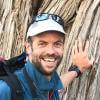



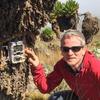







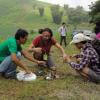



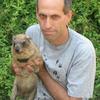




28 June 2017 5:27pm
For those who couldn't make it to the webinar, there's a recording at https://drive.google.com/file/d/0B0smOWFNRzuoLXpPSWREUnE2YzA/view. What do people think? Is this the future of aerial imagery data management?